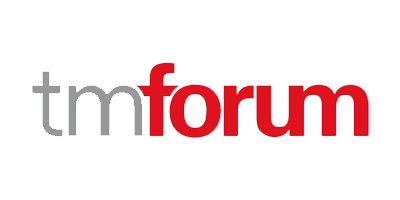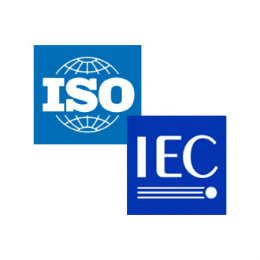Available (2726)
Showing 2041 - 2052 per page
TM Forum Best Practice: GB1006 CEM 2025 Guidebook Release 19.0.1
The Customer Experience Framework described in the GB 1006 CEM 2025 Guidebook Releases 19.01 is inspired by the ETSI framework described in the ETSI TS 103 194 (which complementarily covers network domain Autonomic Management & Control (AMC) aspects by use of the ETSI GANA Model), and borrows concepts from the ETSI framework, modifies and adapts them to the customer experience domain while intending to ensure that the two frameworks complement each other.

Network Technologies (NTECH); Autonomic network engineering for the self-managing Future Internet (AFI); Instantiation of the ETSI Generic Autonomic Network Architecture (GANA) Model onto heterogeneous wireless access technologies using cognitive algorith
The scope of the work is to provide a mapping of architectural components for autonomic network management & control developed/implemented in the EC-funded WISHFUL Project to the ETSI NTECH AFI Generic Autonomic Networking Architecture (GANA) model—an architectural reference model for autonomic networking, cognitive networking and self-management. The mapping pertains to architectural components for autonomic decision-making and associated control-loops in wireless network architectures and their associated management and control architectures. The objective/goal is to illustrate how the GANA can be implemented using the components developed in the EC-funded WISHFUL and ORCA Projects and to show the extent to which the WISHFUL architecture augmented with some virtualisation and hardware acceleration techniques developed in the ORCA project implements the GANA model, in order to guide the industry (implementers of autonomics components for autonomic networks and their associated autonomic management & control architectures) on how to leverage this work in their efforts on GANA implementations. The mapping of the components to the GANA model concepts serves to illustrate how to implement the key abstraction levels for autonomics (self-management functionality) in the GANA model for the targeted wireless networks context, taking into consideration the work done in ETSI TR 103 495. The other objective is to also illustrate the value of joint autonomic management and control of heterogeneous wireless access technologies in such a GANA implementation context, with illustration on where Cognitive algorithms for autonomics (such as Machine Learning and other AI algorithms) can be applied in joint autonomic management & control of heterogeneous wireless access networks. The document answers the question of how to implement the ETSI GANA model using WISHFUL architecture and ORCA concepts.

Internet of Things (loT) — Reference Architecture
This document provides a standardized IoT Reference Architecture using a common vocabulary, reusable designs and industry best practices. It uses a top down approach, beginning with collecting the most important characteristics of IoT, abstracting those into a generic IoT Conceptual Model, deriving a high level system based reference with subsequent dissection of that model into the four architecture views (functional view, system view, networking view and usage view) from different perspectives.

Information technology - Security techniques - Information security management systems - Overview and vocabulary (ISO/IEC 27000:2016)
This document provides a standardized IoT Reference Architecture using a common vocabulary, reusable designs and industry best practices. It uses a top down approach, beginning with collecting the most important characteristics of IoT, abstracting those into a generic IoT Conceptual Model, deriving a high level system based reference with subsequent dissection of that model into the four architecture views (functional view, system view, networking view and usage view) from different perspectives.

Information technology - Security techniques - Code of practice for information security controls (ISO/IEC 27002:2013 including Cor 1:2014 and Cor 2:2015)
The standard provides guidelines for the security standards of organizational information and information security management practices, including the selection, implementation and management of controls, taking into account the risk environment for the security of the organisation information.

Information technology - Security techniques - Guidelines for identification, collection, acquisition and preservation of digital evidence (ISO/IEC 27037:2012)
The standard defines the specific guidelines for the management of digital data which are the identification, collection, acquisition and preservation of digital evidence that can be of probative value. This standard provides guidance to individuals regarding common situations encountered during the processing of digital data and assists organizations in their disciplinary procedures and in facilitating the exchange of potential digital evidence between jurisdictions.

Information technology - Security techniques - Specification for digital redaction (ISO/IEC 27038:2014)
The international standard specifies the technical characteristics for the preparation of digital documents. It also outlines the requirements for software editing tools and methods to check that digital editing has been completed safely.
The guidelines for the preparation of information deriving from databases are not included in the standard.

Information technology - Security techniques - Specification for digital redaction (ISO/IEC 27038:2014)
The international standard specifies the technical characteristics for the preparation of digital documents. It also outlines the requirements for software editing tools and methods to check that digital editing has been completed safely.
The guidelines for the preparation of information deriving from databases are not included in the standard.

Configuration Management Database (CMDB) Federation Specification
The definition of a CMDB in the context of this specification is based on the definition described in the IT Infrastructure Library (ITIL): a database that tracks and records configuration items associated with the IT infrastructure and the relationships between them. Strictly speaking, the ITIL CMDB contains a record of the expected configuration of the IT environment, as authorized and controlled through the change management and configuration management processes. The federated CMDB in this specification extends this base definition to federate any management information that complies with the specification’s patterns, schema, and interfaces, such as the discovered actual state in addition to the expected state. Typically, an administrator selects the data to be included in a CMDB by configuring the tool that implements the CMDB.

Information technology - Security techniques - Guidance on assuring suitability and adequacy of incident investigative method (ISO/IEC 27041:2015)
The standard provides a guideline on the mechanisms to ensure that the methods and processes used in the investigation of information security incidents are "fit for purpose". It contains the best practices regarding the definition of the requirements, the description of the methods, and demonstration of how the implementation of the methods can satisfy the requests. It also includes considerations on how vendors and third parties can be used to help this warranty process.


